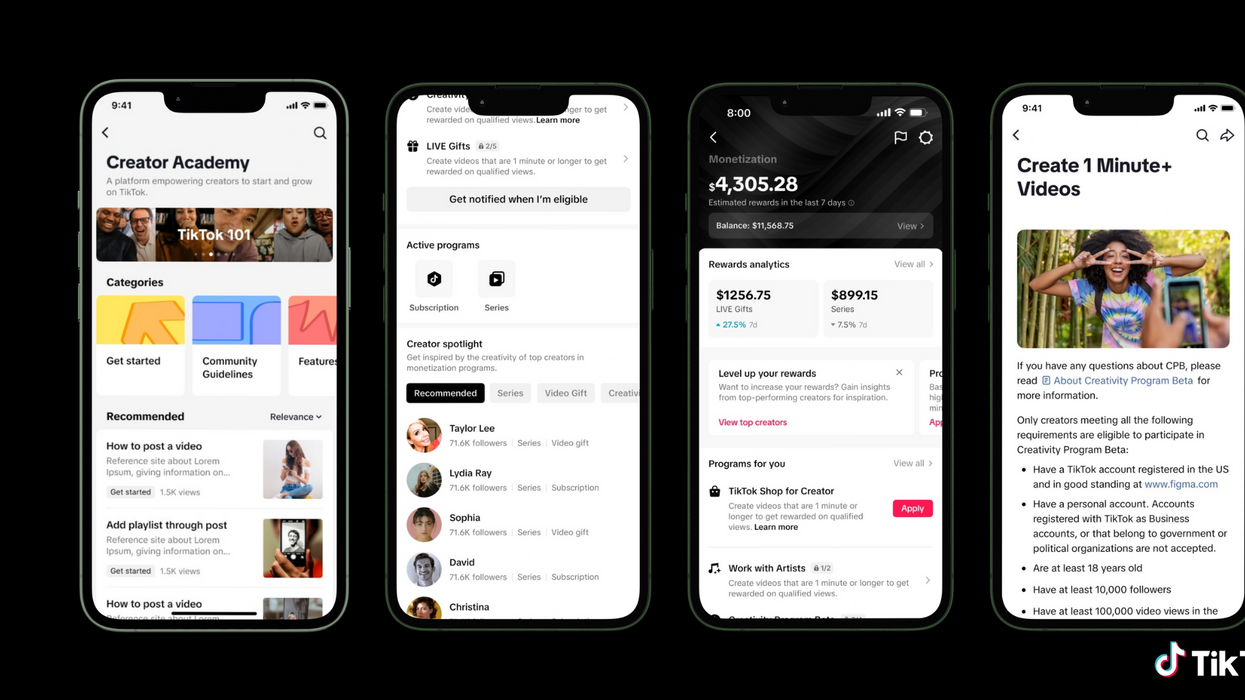Make More Money From Your TikTok Videos with New Creator Tools
TikTok has announced new programs with enhanced resources and new monetization tools for their budding creator economy.

New TikTok Creator Fund
We know you’re excited—you’re this much closer to quitting your day job in film and video and dedicating 100% of your time to becoming a full-time TikTok content creator. You're almost there. Fame is one viral self tape voiced over by a robot lady away. You're flossing, flossing like no tomorrow, and—wait... you’re not?
You should rethink that now as TikTok has unveiled new efforts to empower creators to succeed on TikTok with enhanced resources and new monetization tools. These new programs are firmly aimed at allowing creators to make more money and further fuel their TikTok economy.
Let’s take a look at these new programs, how they work, and if they might be worth exploring for your content creation dreams.
Longer Videos = More Money
About a year ago, TikTok introduced a new program to help its creators make more money on the platform by making longer videos. Launched as an invite-only beta program, this Creator Fund has now given way to a new program called Creator Rewards that TikTok is pushing as its new primary way for creators to make money directly via TikTok itself.
The catch is that the videos must be longer than one minute and that payouts will be calculated by their own rewards formula that focuses on originality, play duration, search value, and audience engagement.
Since their beta program's release, TikTok reports that total creator revenue has increased by over 250% within the last six months and that the number of creators making over $50k a month has nearly doubled as well.
Is There Money to be Made on TikTok?
That seems to be the question here and one that TikTok is trying very hard to answer with a certified "yas". It’s no secret that TikTok is going after (or at least looking to share) YouTube’s dominance over the video creator space.
Since 2022, when TikTok started rolling out longer videos on the platform, users have spent 50% of their time watching longer videos on TikTok and viewership of longer content increased nearly 40% over the last 6 months.
And, as TikTok retains eyes for longer, their metrics for ads and revenue are most likely rising as well. Hence the push to reward creators (a bit) more and challenge the revenue-sharing dominance of YouTube.
Still, it might be a bit of a stretch to see too many filmmakers or video pros have much interest in creating content specifically for TikTok. However, if you work with clients looking to explore this space, or you do want to tinker with content creation yourself, TikTok is becoming more viable every day as younger generations are shifting towards this type of content consumption.
- Ad Revenue From Streaming Sites Could Generate $10 Billion ›
- How Are Filmmakers Using TikTok? ›
- How I Made a Horror Film On TikTok With Just an iPhone and a Ring Light ›
- How I Got One Million Followers on TikTok (and Became a Filmmaker) ›
- You Might Be Able to Monetize Your TikToks Soon ›
- When to Go Full Time as a Creative | No Film School ›











